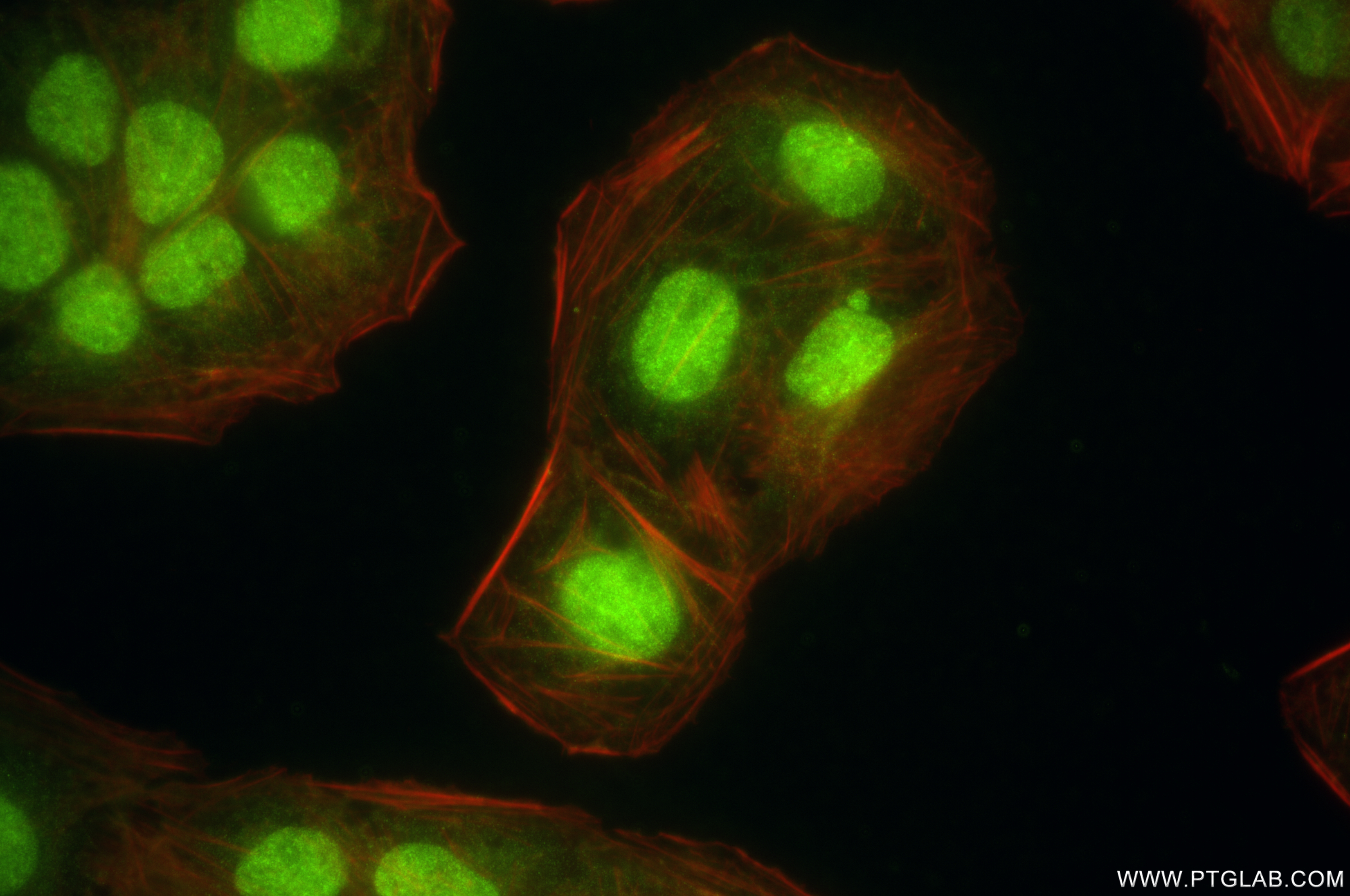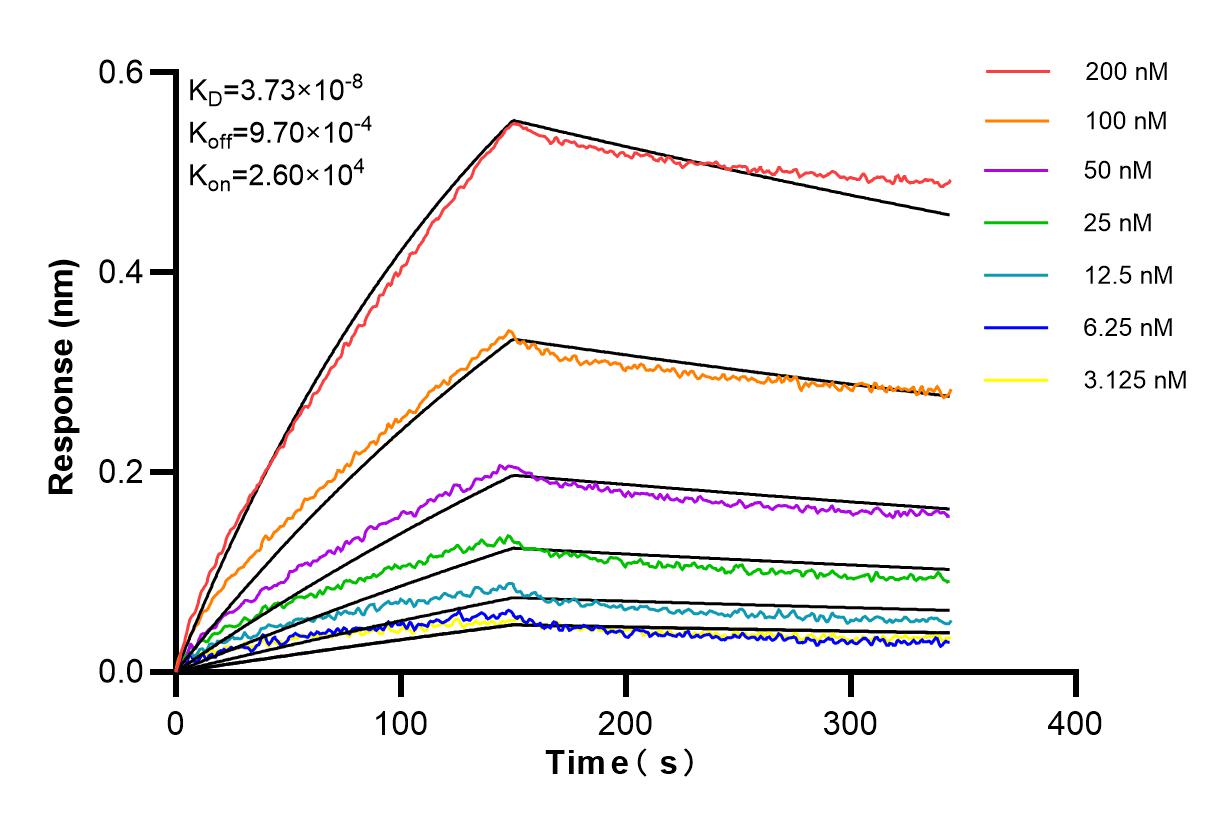验证数据展示
经过测试的应用
| Positive IF/ICC detected in | U2OS cells |
推荐稀释比
| 应用 | 推荐稀释比 |
|---|---|
| Immunofluorescence (IF)/ICC | IF/ICC : 1:400-1:1600 |
| It is recommended that this reagent should be titrated in each testing system to obtain optimal results. | |
| Sample-dependent, Check data in validation data gallery. | |
产品信息
84997-4-RR targets TBX4/5 in IF/ICC, ELISA applications and shows reactivity with human samples.
| 经测试应用 | IF/ICC, ELISA Application Description |
| 经测试反应性 | human |
| 免疫原 |
CatNo: Ag3845 Product name: Recombinant human TBX5 protein Source: e coli.-derived, PGEX-4T Tag: GST Domain: 1-328 aa of BC027942 Sequence: MADADEGFGLAHTPLEPDAKDLPCDSKPESALGAPSKSPSSPQAAFTQQGMEGIKVFLHERELWLKFHEVGTEMIITKAGRRMFPSYKVKVTGLNPKTKYILLMDIVPADDHRYKFADNKWSVTGKAEPAMPGRLYVHPDSPATGAHWMRQLVSFQKLKLTNNHLDPFGHIILNSMHKYQPRLHIVKADENNGFGSKNTAFCTHVFPETAFIAVTSYQNHKITQLKIENNPFAKGFRGSDDMELHRMSRMQSKEYPVVPRSTVRQKVASNHSPFSSESRALSTSSNLGSQYQCENGVSGPSQDLLPPPNPYPLPQEHSQIYHCTKRKE 种属同源性预测 |
| 宿主/亚型 | Rabbit / IgG |
| 抗体类别 | Recombinant |
| 产品类型 | Antibody |
| 全称 | T-box 5 |
| 别名 | TBX5, HOS, T box 5, T-box protein 5, T-box transcription factor TBX5 |
| 计算分子量 | 518 aa, 57 kDa |
| GenBank蛋白编号 | BC027942 |
| 基因名称 | TBX5 |
| Gene ID (NCBI) | 6910 |
| 偶联类型 | Unconjugated |
| 形式 | Liquid |
| 纯化方式 | Protein A purification |
| UNIPROT ID | Q99593 |
| 储存缓冲液 | PBS with 0.02% sodium azide and 50% glycerol, pH 7.3. |
| 储存条件 | Store at -20°C. Stable for one year after shipment. Aliquoting is unnecessary for -20oC storage. |
背景介绍
T-box genes encode a family of transcription factors that have been identified in all metazoans and which play diverse roles during embryonic development. TBX5, a member of T-box family, has an essential role in the initiation of limb outgrowth and heart development. Genetic variation near TBX5 that associates with PR and/or QRS interval variation, which suggests that TBX5 plays a role in CCS function in the general population. Because 77 % amino acid sequence of TBX5 is identical to TBX4, this antibody recognizes both TBX4 and TBX5.
实验方案
| Product Specific Protocols | |
|---|---|
| IF protocol for TBX4/5 antibody 84997-4-RR | Download protocol |
| Standard Protocols | |
|---|---|
| Click here to view our Standard Protocols |



